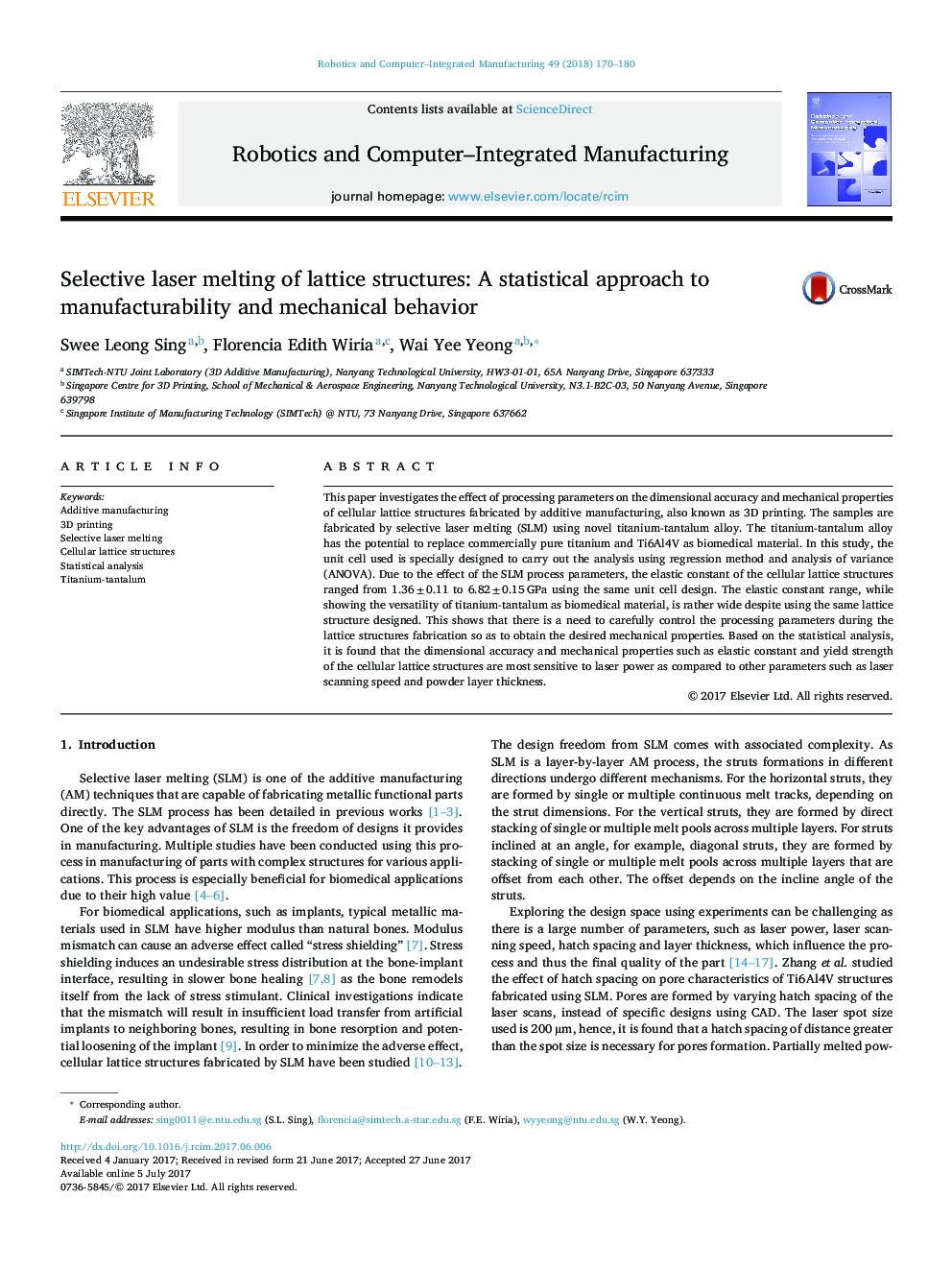| کد مقاله | کد نشریه | سال انتشار | مقاله انگلیسی | نسخه تمام متن |
|---|---|---|---|---|
| 4948941 | 1439928 | 2018 | 11 صفحه PDF | دانلود رایگان |
- Lattice structure unit cell was specially designed for statistical modeling of selective laser melting (SLM) process
- Titanium-tantalum lattice structures were fabricated using SLM for the first time
- Through careful manipulation of the process parameters, dimensional accuracy of the lattice structures can be improved. It can also lead to better control of the resulting mechanical properties
- The strut dimensions of SLM fabricated lattice structures are most sensitive to laser power, as compared to layer thickness and scanning speed
- The mechanical properties of SLM fabricated lattice structures are all dependent on laser power, scanning speed and layer thickness. However, the porosity and elastic constant are most sensitive to laser power, as compared to layer thickness and scanning speed.
This paper investigates the effect of processing parameters on the dimensional accuracy and mechanical properties of cellular lattice structures fabricated by additive manufacturing, also known as 3D printing. The samples are fabricated by selective laser melting (SLM) using novel titanium-tantalum alloy. The titanium-tantalum alloy has the potential to replace commercially pure titanium and Ti6Al4V as biomedical material. In this study, the unit cell used is specially designed to carry out the analysis using regression method and analysis of variance (ANOVA). Due to the effect of the SLM process parameters, the elastic constant of the cellular lattice structures ranged from 1.36â±â0.11 to 6.82â±â0.15â¯GPa using the same unit cell design. The elastic constant range, while showing the versatility of titanium-tantalum as biomedical material, is rather wide despite using the same lattice structure designed. This shows that there is a need to carefully control the processing parameters during the lattice structures fabrication so as to obtain the desired mechanical properties. Based on the statistical analysis, it is found that the dimensional accuracy and mechanical properties such as elastic constant and yield strength of the cellular lattice structures are most sensitive to laser power as compared to other parameters such as laser scanning speed and powder layer thickness.
169
Journal: Robotics and Computer-Integrated Manufacturing - Volume 49, February 2018, Pages 170-180
